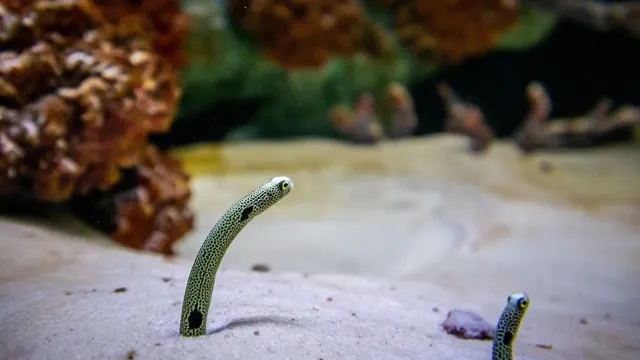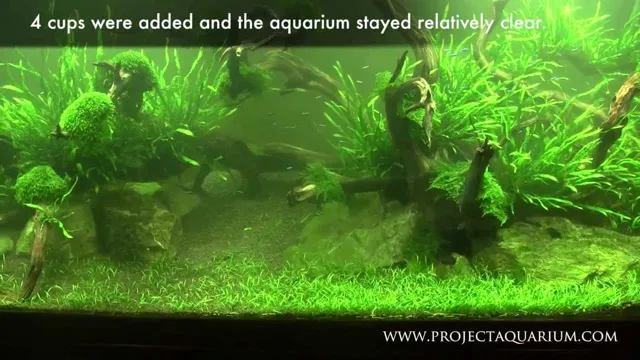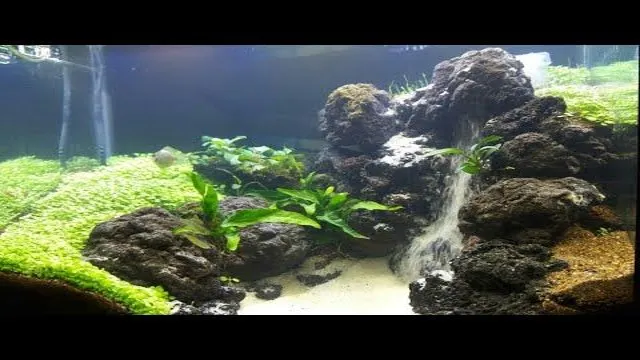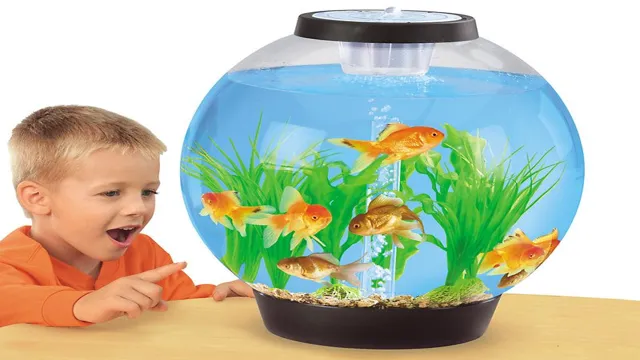Keeping a clean aquarium is essential for the health and well-being of your fish. One crucial aspect of aquarium maintenance is vacuuming the sand bed. But how often should you be doing this? Is it something that needs to be done daily, weekly, or monthly? The answer isn’t as straightforward as you might think.
It largely depends on the size of your aquarium, the number of fish you have, and the type of substrate you’re using. In this blog, we’ll discuss various factors that affect how often you should be vacuuming your aquarium sand and give you some tips for maintaining a healthy and clean aquarium.
The Importance of Vacuuming Aquarium Sand
As an aquarium owner, you may wonder how often you need to vacuum your aquarium sand. The importance of vacuuming aquarium sand cannot be overstated. It not only helps to remove debris and waste that accumulates on the sand bed but also aerates and promotes better water circulation in the tank.
Neglecting the sand bed can lead to the buildup of harmful toxins, resulting in poor water quality that compromises the health of your aquatic pets. Ideally, you should aim to vacuum your aquarium sand at least once a week using a specialized gravel cleaner. Remember to be gentle and avoid disturbing the sand bed too much, as this can release toxic gases that can harm your fish.
By incorporating regular vacuuming into your aquarium maintenance routine, you can ensure a clean and healthy environment for your underwater friends.
Removes Debris
Aquarium Sand Vacuuming Keeping an aquarium clean and free from debris is essential for the health and well-being of the fish and other aquatic creatures living in it. One important way to achieve this is by vacuuming the sand in the aquarium. Although sand may seem clean on the surface, there could be layers of debris building up beneath it.
This debris can include uneaten food, fish waste, and dead plant material. All of this can cause harm to aquatic life, leading to various health problems and even death. Vacuuming the sand regularly ensures that you are removing all the unwanted debris and creating a healthy environment for your aquatic pets to thrive.
This process not only improves the aesthetics of the aquarium, but also contributes to the overall health and longevity of your aquatic ecosystem. Imagine it as cleaning your own home, where you need to vacuum the floors and eliminate any unwanted dirt or dust regularly. Similarly, vacuuming aquarium sand is essential for keeping your aquatic ecosystem clean and healthy.
Prevents Algae Growth
Vacuuming aquarium sand is a crucial step in preventing algae growth and maintaining a healthy aquatic environment for your fish and other aquatic animals. It is essential to remove any uneaten fish food, debris, or waste that may accumulate on the sand, as it releases harmful ammonia and other toxins, leading to the growth of harmful algae. By vacuuming the sand regularly, you can maintain proper water quality and prevent the buildup of algae, which can cause harm to your aquatic life.
Additionally, proper vacuuming can also prevent the development of other harmful elements in your aquarium, such as anaerobic pockets and gas buildup that can put your aquatic life at risk. By taking the time to vacuum your aquarium sand regularly, you can ensure that your pets are living in a healthy and safe environment, reducing the need for other chemicals or interventions to maintain their well-being.
Improves Water Quality
Vacuuming aquarium sand is an essential step in keeping your aquatic environment healthy and clean. Sand provides an ideal breeding ground for bacteria and other microorganisms that feed on leftover fish food, fish waste, and decaying plant matter. These waste products accumulate on the surface of the sand and can quickly compromise water quality and lead to water discoloration.
By vacuuming the sand, you help remove these waste products, restore water clarity, and reduce the risk of toxic conditions in the aquarium. Moreover, sand vacuuming also assists you to extract the buildup of dangerous gases such as ammonia and nitrate, which can be harmful to fish and other aquatic animals. Thus, by making a regular habit of vacuuming your aquarium sand, you can improve water quality, reduce bad smells, lengthen the lifespan of your aquatic pets, and keep your aquatic environment balanced and healthy.
Factors to Consider in Determining Vacuuming Frequency
If you’re wondering how often you should vacuum your aquarium sand, there are a few factors to consider. Firstly, the size of your tank plays a role. Generally, larger tanks should be vacuumed less frequently than smaller ones. (See Also: How to Lower Alkalinity in Aquarium Water: Effective Methods and Tips)
The number and size of fish in your tank is also important to consider. If you have many large, messy fish, you may need to vacuum more frequently than if you only have a few small, clean fish. Additionally, how often you feed your fish can impact the frequency of vacuuming.
Overfeeding can create excess waste, which will require more frequent vacuuming. Lastly, the type and quality of your aquarium filter will affect your vacuuming needs. A high-quality filter that effectively removes waste will reduce the need for frequent vacuuming.
In general, aim to vacuum your aquarium sand once a week, but adjust as needed based on the above factors. Remember, a clean tank is essential for the health and well-being of your fish!
Fish Population
When it comes to keeping fish in an aquarium, it is important to maintain a healthy environment to ensure their well-being. Vacuuming the substrate of the aquarium is one of the most important tasks, as it helps to remove debris and waste that can negatively impact the water quality. The frequency at which you should vacuum your aquarium depends on a few factors, such as the size of the tank, the number of fish, and the type of filter used.
As a general rule, it is recommended to vacuum the substrate once a week for smaller tanks, while larger tanks can be vacuumed every other week. However, you should keep a close eye on the accumulation of debris and feces in the aquarium to determine if you need to increase or decrease the frequency. By regularly vacuuming the aquarium, you can ensure that your fish have a clean and healthy environment to thrive in.
Size of Tank
When it comes to determining how frequently you should vacuum your aquarium, the size of your tank is an important factor to consider. Larger tanks generally require less frequent vacuuming than smaller ones, as the larger volume of water tends to stabilize more quickly. However, this is not always the case, as heavily stocked tanks or those with an excess of waste-producing organisms may require more frequent cleaning regardless of their size.
It is important to monitor the condition of your aquarium regularly to determine the optimal vacuuming schedule for your specific situation. By taking into account factors such as tank size, water parameters, and animal stocking levels, you can ensure that your aquarium remains clean and healthy for its inhabitants.
Filter System
When it comes to determining how often you should vacuum, you need to consider a variety of factors, one of which is your filter system. The more efficient or advanced your vacuum filter is, the less you may need to vacuum. HEPA filters, for example, are designed to trap smaller particles and allergens, which reduces the amount of dust that gets recirculated into the air.
A clogged or dirty filter, on the other hand, can actually decrease the effectiveness of your vacuum. That’s why it’s important to clean or replace your filter regularly. Another factor to consider is the level of foot traffic in your home, especially if you have pets or children who track in dirt and debris more frequently.
Ultimately, the goal is to keep your floors clean and healthy for you and your family, which may require more or less frequent vacuuming depending on these different factors.
Type of Sand
When it comes to the type of sand in your home, it’s important to consider the frequency of vacuuming. Fine sand particles can easily get trapped in carpets and crevices, requiring more frequent vacuuming to prevent buildup. On the other hand, coarse sand particles are heavier and tend to settle on hard surfaces, making them easier to sweep and less of a vacuuming concern. (See Also: How to Cut Zebra Rock for Aquariums: A Step-by-Step Guide for Perfect Precision)
Additionally, if you have pets or children who frequently track sand into the house, it’s important to increase the frequency of vacuuming to prevent any potential health hazards. Overall, it’s best to assess the type of sand in your home and adjust your vacuuming frequency accordingly to maintain a clean and healthy living environment.
Recommended Vacuuming Frequency
When it comes to aquarium sand, vacuuming is an essential task to maintain a healthy and clean environment for your fish and other aquatic creatures. Therefore, it is essential to know how often to vacuum aquarium sand. Typically, it is recommended to vacuum the sand every two to four weeks, depending on the size of your tank and the number of inhabitants.
However, if you have a heavily populated tank or notice debris and waste accumulating quickly, you may need to vacuum more frequently. On the other hand, if you have a small tank with only a few fish, you might not need to vacuum as often. Remember to check the water chemistry regularly and do water changes as needed, as these factors can also affect how often you need to vacuum.
By keeping up with regular vacuuming, you can increase the lifespan of your aquarium and ensure your fish thrive in a healthy environment.
Once a Week for Normal Population
When it comes to vacuuming, everyone has their own preferences and needs. Some people may find it necessary to vacuum daily, while others can get away with vacuuming once a week. For the average population, it is recommended to vacuum your floors at least once a week.
This frequency allows you to pick up any dust, dirt, and debris that accumulates over time and keeps your home looking clean and fresh. However, if you have pets or people in your household with allergies, you may need to vacuum more frequently. Pet hair, dander, and allergens can quickly build up in your carpet and affect the air quality in your home.
By vacuuming regularly with a high-quality vacuum that has a HEPA filter, you can prevent these issues and keep your home healthy. Remember, the more often you vacuum, the less time it will take to complete the task each time. So, don’t be afraid to break out the vacuum and give your floors a good clean at least once a week.
Your home – and your health – will thank you.
Twice a Week for Large Population or Heavy Feeding
When it comes to keeping a clean home, vacuuming is one of the most important tasks. However, the frequency at which you vacuum can depend on a variety of factors, including the size of your household and how much foot traffic your floors get. For larger households or those with heavy foot traffic, it’s recommended to vacuum at least twice a week to effectively remove dirt and debris from your carpets and floors.
Not only does this help keep your home looking tidy, but it can also improve indoor air quality for those with allergies or asthma. So, make sure to schedule regular vacuuming sessions to maintain a clean and healthy living environment.
Every Two Weeks for Small Tanks or Low Fish Population
When it comes to maintaining a small aquarium, it’s important to remember that water quality is crucial for your fish’s health and wellbeing. While many factors can impact water quality, regular vacuuming is an essential part of any tank maintenance routine. We recommend vacuuming your small tank every two weeks, especially if you have a low fish population.
This frequency ensures that debris and waste don’t accumulate too quickly, making it easier to maintain healthy water conditions for your fish. By regularly vacuuming your tank, you’ll also be able to remove any uneaten food or dead plant matter that can contribute to unhealthy water conditions. Remember, a clean tank is a happy tank, and your fish will thank you for it! (See Also: How to Arrange Aquarium Plants: Tips and Tricks for a Beautiful Underwater Garden)
Conclusion: Regular Vacuuming Keeps Aquariums Healthy
After much research and consideration, it seems that the frequency of vacuuming aquarium sand ultimately depends on the size of your tank, the number of fish, and how messy they are. As a general rule, it’s recommended to vacuum your sand every 2-4 weeks, but don’t hesitate to adjust accordingly. Remember, a clean tank is a happy tank (and fish)! So let’s embrace our inner neat freaks and keep those aquariums sparkling clean!”
FAQs
Why is vacuuming aquarium sand important?
Vacuuming aquarium sand is important to remove excess debris and waste that can accumulate and harm the fish living in the tank.
How often should I vacuum my aquarium sand?
It is recommended to vacuum your aquarium sand at least once a week to maintain the cleanliness of the tank.
What kind of vacuum should I use for aquarium sand?
You should use a siphon-style vacuum specifically designed for aquarium sand to avoid clogging and damaging the sand bed.
Can vacuuming aquarium sand harm my fish?
If done improperly, vacuuming aquarium sand can harm fish and other aquatic life. It is important to follow proper techniques and use the right equipment.
Should I vacuum my aquarium sand during water changes?
Yes, it is recommended to vacuum your aquarium sand during water changes as this is a good time to remove any build-up of debris.
How can I tell if my aquarium sand needs to be vacuumed?
If you notice a build-up of debris or waste on the sand bed, it is likely time to vacuum.
Can I use a regular vacuum for aquarium sand?
No, you should not use a regular vacuum for aquarium sand as it can damage the sand bed and harm fish. Use a siphon-style vacuum specifically designed for aquarium use.







